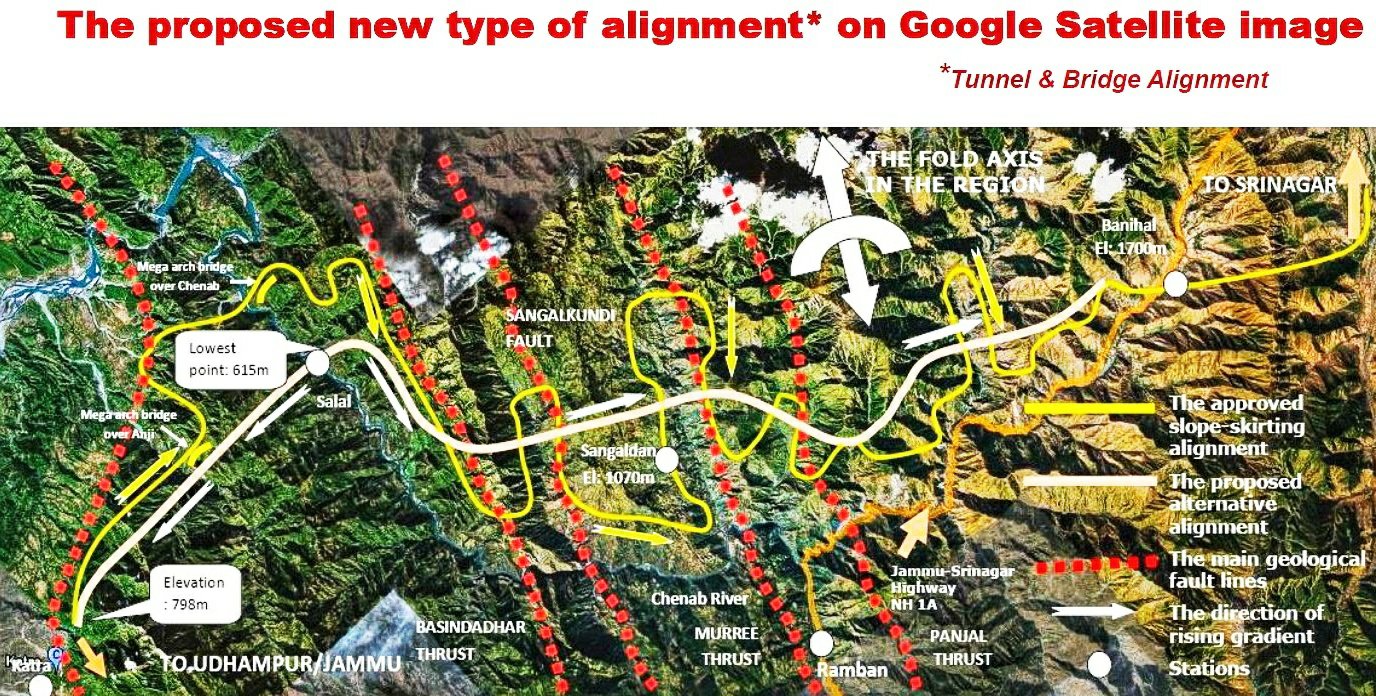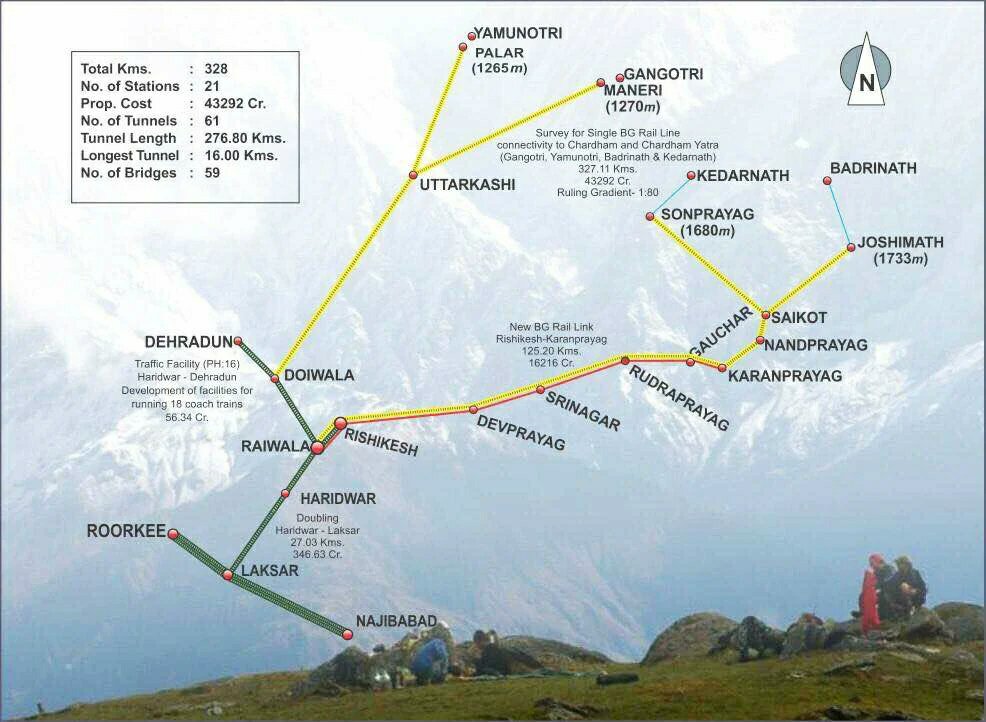The deluge in Uttarakhand is a timely reminder to GOI & RlyBd
Yesterday’s deluge in Uttarakhand is a timely reminder to Government of India and Railway Board to take a close look at the seven beleaguered rail-line projects in the Himalayas in Kashmir, Uttarakhand and Northeast reasons
Alok Kumar Verma, IRSE (Rtd)
Yesterday’s disaster by deluge in the Rishiganga and Dhauliganga rivers in Uttarakhand is a timely reminder to the Railway Board and the Govt of India to take a close look at the technical feasibility of construction of safe and stable railway lines under the ongoing Kashmir Rail Link Project and the other six projects in the Himalayas.

These are National Projects of strategic importance. Total expenditure on these 7 projects could exceed INR one lakh crore.
One of these projects (Rishikesh – Karnaprayag New Line Project) is near where yesterday’s deluge occurred.
According to the information available so far, the deluge was probably caused by a massive landslide or breaching of a glaciar deposit.
One under-construction hydroelectricity dam has been completely washed away and another has been extensively damaged.
Many roads, buildings and houses have been damaged, and about 150 people are feared dead.
Every few years such disasters by landslides and avalanches (which may be triggered by earthquakes or any of the various other factors) are reported somewhere in the Himalayas.
For the past 13 years now, Railway Board has failed to carry out a proper consideration of the report which I submitted in 2007 about the high risk to the stability and safety of the line because of its deeply flawed alignment that requires construction of massive bridges, tunnels and embankments on landslide prone mountain slopes.
The Govt should call for my report of 2007 and the reports of the Expert Committees that were appointed in 2008 and 2014 to examine my report and suggest whether the existing alignment should be abandoned, and the alignment suggested by me should be adopted.
In its report dated 04.02.2015, the second committee (the Sreedharan Committee) had unanimously recommended that the current alignment and construction costing about INR 6,000 crore should be abandoned, and construction should start afresh on the alignment suggested by me.
The committee also said that construction of a double line on my alignment will cost less than what it will take to complete the balance work of a single line on the existing alignment.
No lessons seem to have been learnt by Railway Board from its debacle on these projects which are nowhere near completion even after 10 to 20 years of construction.
Such flawed alignments (without proper survey of the ground conditions and the geohazards) continue to be adopted by Railway Board.
Three recent examples are:
i. the Bilaspur-Leh new line project in Ladakh
ii. the Char Dham Railway Project in the Garhwal Himalayas where yesterday’s deluge occurred, and
iii. Thiruvananthapuram-Kasaragod Semi – highspeed Line Project in the highlands and backwaters of Kerala.
Recently, engineers of Northern Railway consulted me about their alignment for the Bilaspur-Manali-Leh line. This would be an extremely challenging project, which could cost about INR 1.5 lakh crore if undertaken on the alignment being currently survey by Northern Railway.
The engineers approached me after I had pointed out in my post on Twitter the flaws in the alignment on which Final Location Survey was being carried out.
Among the suggestions that I have given them through email one suggestion is aimed at specifically eliminating danger to the stability and safety of the line from sudden flooding of rivers by landslides and avalanches on the upstream side.
This suggestion, which is contained in Para 4, item IV of my email dated 12.10.20 reads:
“The alignment in cuttings/embankments on the slopes should be preferably minimum 50 to 100m above the bottom of the valleys.”

In several long stretches the alignment currently being surveyed by Northern Railway runs in the narrow space by the side of the rivers at the bottom of the valleys, which are formed by steep mountain slopes on either side of the river.
In such a situation, a deluge in the river can pose high risk to the stability of the line and could even cause a stretch of the line to be washed away completely like the dam at Rishi was washed away yesterday morning by the deluge in Rishi Ganga.
Anyone can read more about the alignments of the above projects and their status of construction in my earlier posts to which links are given at the end of this thread.
HAVE ANY LESSONS BEEN LEARNT FROM THE FIASCO ON THE KASHMIR RAIL LINK AND OTHER PROJECTS IN THE HIMALAYAS?
…1/5 https://t.co/SKWYQ49doR pic.twitter.com/49HglCh0bj— Alok Kumar Verma, IRSE (Retd.) (@trains_are_best) December 17, 2020
Railway Board's debacle on the Kashmir Rail Link and 6 other new line projects in the Himalayas.
With tense military situation across India's Himalayan border, it is time the Govt of India took note of Railway Board's abysmal engineering fiasco of 18 yrs in its attempts to … https://t.co/UAiyGq9NyB pic.twitter.com/ntXfYvBNQz
— Alok Kumar Verma, IRSE (Retd.) (@trains_are_best) July 8, 2020


